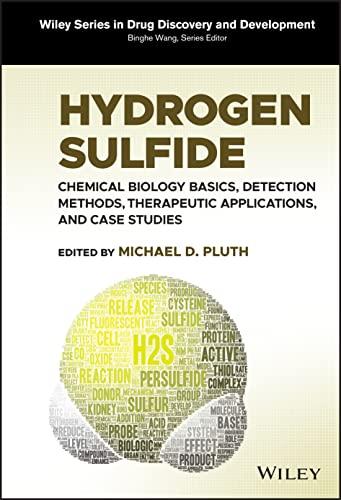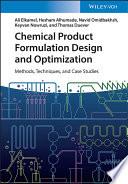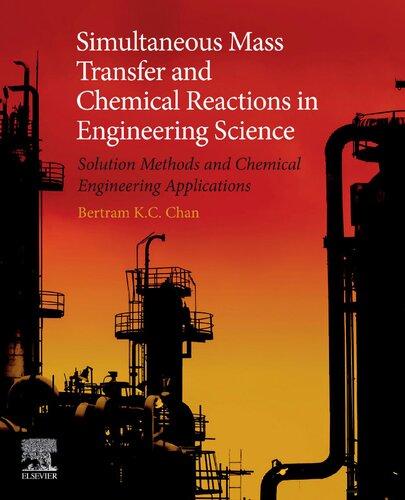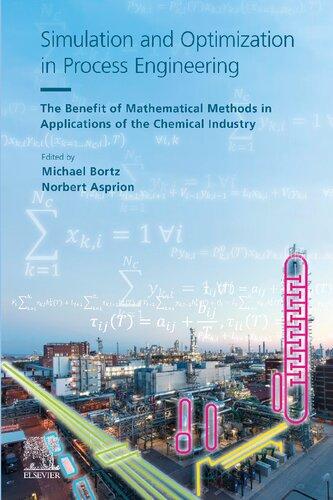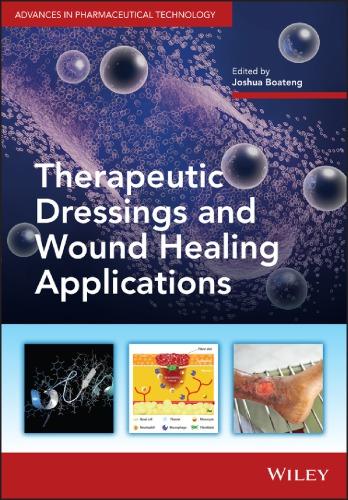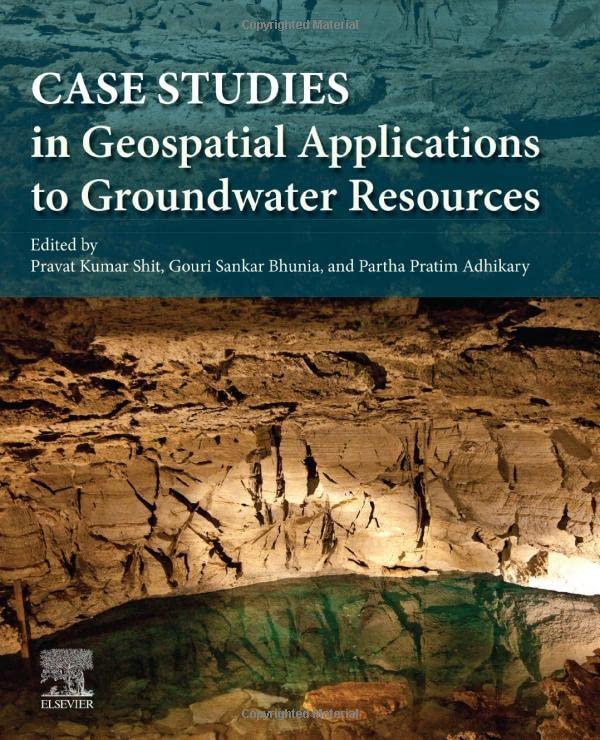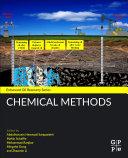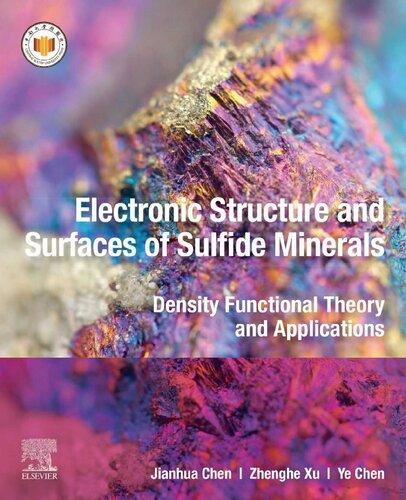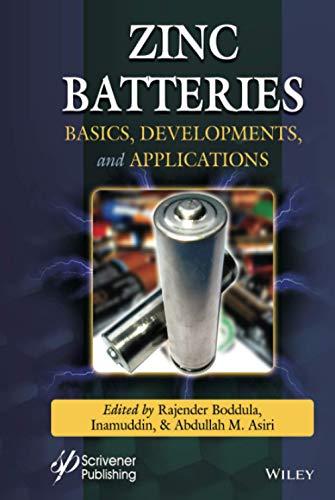HydrogenSulfide
ChemicalBiologyBasics,DetectionMethods,Therapeutic Applications,andCaseStudies
Editedby
MichaelD.Pluth DepartmentofChemistry&Biochemistry
UniversityofOregon
Eugene,OR,USA
Thiseditionfirstpublished2023
©2023JohnWiley&Sons,Inc.
Allrightsreserved.Nopartofthispublicationmaybereproduced,storedinaretrievalsystem,or transmitted,inanyformorbyanymeans,electronic,mechanical,photocopying,recordingor otherwise,exceptaspermittedbylaw.Adviceonhowtoobtainpermissiontoreusematerialfromthis titleisavailableathttp://www.wiley.com/go/permissions.
TherightofMichaelD.Pluthtobeidentifiedastheeditorialmaterialthisworkhasbeenassertedin accordancewithlaw.
RegisteredOffice
JohnWiley&Sons,Inc.,111RiverStreet,Hoboken,NJ07030,USA
EditorialOffice 111RiverStreet,Hoboken,NJ07030,USA
Fordetailsofourglobaleditorialoffices,customerservices,andmoreinformationaboutWiley productsvisitusatwww.wiley.com.
Wileyalsopublishesitsbooksinavarietyofelectronicformatsandbyprint-on-demand.Somecontent thatappearsinstandardprintversionsofthisbookmaynotbeavailableinotherformats.
LimitofLiability/DisclaimerofWarranty
Inviewofongoingresearch,equipmentmodifications,changesingovernmentalregulations,andthe constantflowofinformationrelatingtotheuseofexperimentalreagents,equipment,anddevices,the readerisurgedtoreviewandevaluatetheinformationprovidedinthepackageinsertorinstructions foreachchemical,pieceofequipment,reagent,ordevicefor,amongotherthings,anychangesinthe instructionsorindicationofusageandforaddedwarningsandprecautions.Whilethepublisherand authorshaveusedtheirbesteffortsinpreparingthiswork,theymakenorepresentationsorwarranties withrespecttotheaccuracyorcompletenessofthecontentsofthisworkandspecificallydisclaimall warranties,includingwithoutlimitationanyimpliedwarrantiesofmerchantabilityorfitnessfora particularpurpose.Nowarrantymaybecreatedorextendedbysalesrepresentatives,writtensales materialsorpromotionalstatementsforthiswork.Thefactthatanorganization,website,orproductis referredtointhisworkasacitationand/orpotentialsourceoffurtherinformationdoesnotmeanthat thepublisherandauthorsendorsetheinformationorservicestheorganization,website,orproduct mayprovideorrecommendationsitmaymake.Thisworkissoldwiththeunderstandingthatthe publisherisnotengagedinrenderingprofessionalservices.Theadviceandstrategiescontainedherein maynotbesuitableforyoursituation.Youshouldconsultwithaspecialistwhereappropriate.Further, readersshouldbeawarethatwebsiteslistedinthisworkmayhavechangedordisappearedbetween whenthisworkwaswrittenandwhenitisread.Neitherthepublishernorauthorsshallbeliablefor anylossofprofitoranyothercommercialdamages,includingbutnotlimitedtospecial,incidental, consequential,orotherdamages.
LibraryofCongressCataloging-in-PublicationData
Names:Pluth,MichaelD.,editor.
Title:Hydrogensulfide:chemicalbiologybasics,detectionmethods, therapeuticapplications,andcasestudies/editedbyMichaelD.Pluth.
Description:Firstedition.|Hoboken,NJ:Wiley,2022.|Series:Wiley seriesindrugdiscoveryanddevelopment
Identifiers:LCCN2022018103(print)|LCCN2022018104(ebook)|ISBN 9781119799870(cloth)|ISBN9781119799894(adobepdf)|ISBN 9781119799887(epub)
Subjects:LCSH:Hydrogensulfide–Toxicology.|Hydrogen sulfide–Therapeuticuse.
Classification:LCCRA1247.H8H93252022(print)|LCCRA1247.H8(ebook) |DDC615.9/1–dc23/eng/20220609
LCrecordavailableathttps://lccn.loc.gov/2022018103
LCebookrecordavailableathttps://lccn.loc.gov/2022018104
Coverdesignby:Wiley
Coverimage:CourtesyofMichaelD.Pluth
Setin9.5/12.5ptSTIXTwoTextbyStraive,Chennai,India
Contents
Preface xvii
ListofContributors xix
1FundamentalandBiologicallyRelevantChemistryofH2 S andRelatedSpecies 1
JonM.Fukuto
ListofAbbreviations 1
1.1Introduction 2
1.2TheChemicalBiologyofH2 S 2
1.2.1BasicChemicalPropertiesofH2 S 3
1.2.2H2 SRedoxChemistry 4
1.2.3ReactionsofH2 SwithMetals/Metalloproteins 5
1.2.4H2 SandSulfhemeFormation 6
1.2.5H2 SandHeavyMetals 7
1.3H2 SReactionswithOtherSulfurSpecies 8
1.3.1SulfaneSulfur 8
1.3.2GenerationofRSSH 8
1.3.3RSHVersusRSSHComparison 9
1.3.4RSSHInteractionswithMetals/Metalloproteins 14
1.3.5TheElectrophilicityofRSSH 14
1.3.6Higher-OrderPolysulfides 15
1.3.7RSSHInstability 16
1.4TheBiochemicalUtilityofRSSH 17
1.5Summary/Conclusion 18 References 18
2SignalingbyHydrogenSulfide(H2 S)andPolysulfides(H2 Sn ) andtheInteractionwithOtherSignalingPathways 27 HideoKimura
ListofAbbreviations 27
2.1Introduction 28
2.2DeterminationoftheEndogenousConcentrationsofH2 S 29
2.3H2 SandH2 Sn asSignalingMolecules 31
2.4CrosstalkBetweenH2 SandNO 32
2.4.1TheChemicalInteractionofH2 SandNOProducesH2 Sn 32
2.4.2RegulationofNO-ProducingEnzymesbyH2 SandViceVersa 33
2.5CytoprotectiveEffectofH2 S,H2 Sn ,andH2 SO3 34
2.6EnergyFormationinMitochondriawithH2 S 34
2.7 S-SulfuratedProteinsandBoundSulfaneSulfurinCells 35
2.8RegulatingtheActivityofTargetProteinsbyH2 SandH2 Sn 36
2.8.1S-SulfurationbyH2 S 37
2.8.2S-SulfurationbyH2 Sn 38
2.9Perspectives 38
Acknowledgments 40
AuthorDisclosureStatement 41 References 41
3PersulfidesandTheirReactionsinBiologicalContexts 49 DayanaBenchoam,ErnestoCuevasanta,MatíasN.Möller,and BeatrizAlvarez ListofAbbreviations 49
3.1PersulfidesAreKeyIntermediatesinSulfurMetabolismand Signaling 49
3.2PersulfidesAreFormedinBiologicalSystemsthroughDifferent Pathways 51
3.2.1DisulfidesFormPersulfidesinthePresenceofH2 S 51
3.2.2SulfenicAcidsCanAlsoFormPersulfidesbyReactionwithH2 S 53
3.2.3OtherPersulfideFormationPathwaysInvolveOxidationProductsof H2 S 53
3.2.4SomeSulfurAtomsforPersulfidesAreDonatedbyFreeCysteine 54
3.2.5TrisulfidesAreAlsoaSourceofPersulfides 55
3.2.6PersulfidesCanBePreparedintheLab 56
3.3PersulfidesAreMoreAcidicThanThiols 56
3.4PersulfidesAreStrongerNucleophilesThanThiols 58
3.5PersulfidationProtectsAgainstIrreversibleOxidation 60
3.6PersulfidesInteractwithMetalsandMetalloproteins 61
3.7PersulfidesHaveElectrophilicCharacterinBothSulfurAtoms 62
3.8PersulfidesAreEfficientOne-ElectronReductants 63
3.9ConcludingRemarks 64
References 64
4HydrogenSulfide,ReactiveNitrogenSpecies,and “TheJoyoftheExperimentalPlay” 77
MiriamM.Cortese-Krott
4.1Introduction 77
4.2BasicPhysicochemicalPropertiesofNitricOxideandItsBiological RelevantMetabolites 79
4.2.1NitricOxide 79
4.2.2Nitrite 80
4.2.3Nitrosothiols(RSNOs) 81
4.3BasicPhysicochemicalPropertiesofH2 SandItsBiologicalRelevant Metabolites 82
4.3.1H2 S/HS 83
4.3.2PolysulfidesandPersulfide 85
4.4InorganicSulfur–NitrogenCompounds 86
4.4.1HSNO/SNO 87
4.4.2SSNO 89
4.4.3SULFI/NO 90
4.5PutativeBiologicalRelevanceoftheNO/H2 SChemical Interaction 90
4.5.1PharmacologicalActivity 90
4.5.2PutativeSourcesofSSNO andSULFI/NO InVivo91
4.5.3MethodsofDetection InVivo92
4.6SummaryandConclusions 93 Acknowledgment 93 References 93
5H2 SandBioinorganicMetalComplexes 103
ZacharyJ.Tonzetich
ListofAbbreviations 103
5.1Introduction 104
5.2BasicLigativePropertiesofH2 S/HS 105
5.3H2 SandHemeIron 106
5.4H2 SandNonhemeIron 112
5.5H2 SChemistrywithOtherMetals 122
5.6H2 SSensingwithTransitionMetalComplexes 126
5.7Summary 131 Acknowledgments 134 References 134
x Contents
6MeasurementofHydrogenSulfideMetabolitesUsing theMonobromobimaneMethod 143 XingguiShen,EllenH.Speers,andChristopherG.Kevil ListofAbbreviations 143
6.1Introduction 143
6.1.1HydrogenSulfide:BiologicalSignificance 143
6.1.2HydrogenSulfideChemistry 144
6.1.3BioavailableSulfide 144
6.2Monobromobimane:AnOptimalMethodofBioavailableSulfur Detection 145
6.2.1MonobromobimaneDerivatizationofHydrogenSulfide 146
6.2.2HistoryoftheMonobromobimaneMethod 147
6.3Procedures 148
6.3.1Sulfide-DibimaneStandardSynthesis 148
6.3.2BioavailableSulfidePreparation 149
6.3.3MonobromobimaneDerivatization 149
6.3.4HPLCwithFluorescenceDetection 150
6.3.5MassSpectrometryDetection 150
6.4CaveatsandConsiderations 151 Acknowledgment 152 Disclosures 152 References 152
7FluorescentProbesforH2 SDetection:Cyclization-Based Approaches 157 YingyingWang,YannieLam,CaitlinMcCartney,BrockBrummett, GeatRamush,andMingXian ListofAbbreviations 157
7.1Introduction 157
7.2GeneralDesignofNucleophilicReaction-CyclizationBased FluorescentProbes 159
7.2.1WSPProbes 159
7.2.22,2′ -DithiosalicylicEster-BasedProbes 164
7.2.3AlkylHalide-BasedProbes 166
7.2.4Diselenide-BasedProbes 167
7.2.5SelenenylSulfide-BasedProbes 167
7.2.6AldehydeAddition-BasedProbes 169
7.2.7MichaelAddition-CyclizationBasedProbes 175
7.3ConclusionsandPerspectives 177 Acknowledgments 177 References 177
8FluorescentProbesforH2 SDetection:Electrophile-Based Approaches 183 LongYiandZhenXi
8.1Introduction 183
8.2SelectedProbesBasedonDifferentReactionTypes 185
8.2.1CleavageofC—OBond 185
8.2.2CleavageofC—SBond 188
8.2.3CleavageofC—ClBond 190
8.2.4MichaelAddition 191
8.2.5CleavageofC—NBond 193
8.2.6ReductionofArylAzide 193
8.3ConclusionandFutureProspects 197 References 199
9FluorescentProbesforH2 SDetection:Metal-Based Approaches 203
MariaStrianeseandClaudioPellecchia
9.1Introduction 203
9.2MetalDisplacementApproach 205
9.2.1Copper-BasedSystems 205
9.2.2Zinc-BasedSystems 214
9.2.3DifferentMetal-BasedSystems 216
9.3Coordinative-BasedApproach 218
9.3.1Metalloporphyrin-BasedSystems 218
9.3.1.1SyntheticSystems 219
9.3.1.2NaturalSystems 220
9.3.2Salen-BasedSystems 220
9.3.3SystemswithDifferentOrganicLigands 221
9.4H2 S-MediatedReductionoftheMetalCenter 223
9.5ConclusionsandFutureOutlooks 224 References 225
10H2 SReleasefromP=SandSe—SMotifs 235 RynneA.HankinsandJohnC.LukeshIII ListofAbbreviations 235
10.1Introduction 235
10.2H2 SReleasefromP=SMotifs 236
10.2.1GYY4137:SynthesisandCharacterizationofH2 SRelease 237
10.2.2GYY4137:BiologicalStudies 238
10.2.3GYY4137:MechanisticStudies 240
10.2.4GYY4137:StructuralModificationsandActivityofAnalogs 242
10.2.5JKDonors:Cyclization-AssistedH2 SReleasefromP=SMotifs 248
10.3H2 SReleasefromSe—SMotifs 249
10.3.1AcylSelenylsulfides:SynthesisandCharacterizationofH2 S Release 251
10.3.2AcylSelenylsulfides:MechanisticStudies 251
10.4AcylSelenylsulfides:StructuralModificationsandActivityof Analogs 253
10.5Conclusions 253 References 254
11HydrogenSulfide:TheHiddenPlayerofIsothiocyanates
Pharmacology 261
ValentinaCiti,EugeniaPiragine,VincenzoCalderone,andAlmaMartelli
11.1OrganicIsothiocyanatesasH2 S-Donors 261
11.2OrganicITCsandCardiovascularSystem 266
11.2.1EffectofITCsasH2 SDonorsinVascularInflammation 266
11.2.2VasorelaxingEffectofITCsasH2 SDonors 269
11.2.3OrganicITCsandHeart 270
11.3ChemopreventivePropertiesofITCs 272
11.4Anti-nociceptiveEffectsofITCs 274
11.5Anti-inflammatoryandAntiviralEffectsofITCs 277
11.6Conclusion 280 Acknowledgment 281 References 281
12PersulfideProdrugs 293
BingchenYu,ZhengnanYuan,andBingheWang ListofAbbreviations 293
12.1Introduction 293
12.2PersulfideProdrugs 295
12.2.1StructuralMoietiesThatHaveBeenStudiedforTheirAbilitytoCage andReleasePersulfideSpecies 296
12.2.2Enzyme-SensitiveProdrugs 298
12.2.3ROS-SensitivePersulfideProdrugs 303
12.2.4pH-SensitivePersulfideProdrugs 306
12.2.5Photo-SensitivePersulfideProdrugs 308
12.2.6H2 SProdrugsThatReleaseH2 SViaPersulfideIntermediate 309
12.3ChallengesinPersulfideProdrugDesignandPotentialTherapeutic Applications 310 References 313
13COS-BasedH2 SDonors 321
AnnieK.GilbertandMichaelD.Pluth
13.1Introduction 321
13.2PropertiesofCOS 322
13.3COS-BasedH2 SDelivery 323
13.3.1StimuliResponsiveCOS/H2 SDonors 325
13.3.2Bio-orthogonalDonorActivation 326
13.3.3DonorsActivatedbyNucleophiles 329
13.3.4Enzyme-ActivatedDonors 334
13.3.5pH-ActivatedDonors 337
13.3.6FluorescentDonors 339
13.4ConclusionsandOutlook 341 Acknowledgments 342 References 342
14Light-ActivatableH2 SDonors 347
PetrKlán,TomášSlanina,andPeterŠtacko
14.1Introduction 347
14.2PhotophysicalandPhotochemicalConcepts 347
14.3PhototherapeuticWindow 349
14.4LightSources 349
14.5(Photo)PhysicalPropertiesofH2 S 351
14.6MechanismsandExamplesofH2 SPhotorelease 351
14.6.1PhotoreleaseofH2 SfromExcitedState 352
14.6.2ReleaseofH2 SfromaReactiveIntermediate 355
14.6.3PhotoreleaseofPotentialH2 SDonors 357
14.6.4PhotosensitizedH2 SRelease 362
14.6.5PhotothermalEffect 364
14.7Outlook 365 Acknowledgment 366 References 366
15MacromolecularandSupramolecularApproachesfor H2 SDelivery 373
SarahN.Swilley-Sanchez,ZhaoLi,andJohnB.Matson ListofAbbreviations 373
15.1Introduction 375
15.2H2 S-DonatingLinearPolymers 377
15.2.1PendantH2 SDonors 378
15.2.2H2 SDonorsonChainEnds 379
15.2.3DepolymerizablePolymersfortheReleaseofH2 SviaCOS 383
15.3H2 SDeliveryfromBranchedandGraftPolymerTopologies 384
15.3.1GraftPolymersfortheDeliveryofH2 S 386
15.4PolymerMicellesforH2 SDelivery 388
15.4.1H2 SDonorsCovalentlyAttachedtoPolymerAmphiphiles 389
15.5PolymerNetworksforLocalizedH2 SDelivery 394
15.5.1PhysicalEncapsulationofH2 SDonorsWithinNetworks 394
15.5.2CovalentAttachmentofH2 SDonorsWithinHydrogels 396
15.6OtherPolymericSystemsfortheEncapsulationofH2 SDonors 399
15.6.1MicrofibersasH2 SDonors 400
15.6.2MembranesasH2 SDonors 400
15.6.3MicroparticlesandNanoparticlesasH2 SDonors 401
15.7H2 SReleaseviaSupramolecularSystems 404
15.7.1Self-Assembled,Peptide-BasedMaterialsforH2 SDelivery 405
15.7.2Self-AssembledNanoparticlesandProteinsforH2 SDelivery 410
15.8ConclusionsandFuturePerspectives 414 References 416
16H2 SandHypertension 427
VincenzoBrancaleone,MariarosariaBucci,andGiuseppeCirino
ListofAbbreviations 427
16.1Hypertension,VascularHomeostasisandMediatorsControllingBlood Pressure 428
16.2GenerationofH2 SintheCardiovascularSystem 429
16.2.1BiosyntheticPathways 429
16.2.2CatabolicPathwayforH2 S 430
16.3RelevanceofH2 SinHypertension 432
16.3.1PreclinicalEvidence 432
16.3.2ClinicalEvidence 436
16.4Conclusions 437 References 438
17H2 SSupplementationandAugmentation:Approaches forHealthyAging 445
ChristopherHine,JieYang,AiliZhang,NataliaLlarena,and ChristopherLink
ListofAbbreviations 445
17.1IntroductionandBackground 445
17.1.1GlobalAgingPopulations 445
17.1.2PathophysiologicalAspectsofAging 447
17.1.3AlterationsinSulfurAminoAcidMetabolismandHydrogenSulfide DuringAging 448
17.1.4GeroscienceApproachestoAddressLongevityandImproved Healthspan,andTheirConnectiontoHydrogenSulfide 451
17.2HydrogenSulfideMetabolismandApplicationsinNon-mammalian Aging 454
17.2.1Plants 454
17.2.2Bacteria 454
17.2.3Yeast 455
17.2.4Worms 458
17.2.5Flies 459
17.3HydrogenSulfideMetabolismandApplicationsinNonhuman MammalianAging 460
17.3.1StandardLaboratoryRodents(MiceandRats) 460
17.3.2NakedMole-Rats 464
17.4HydrogenSulfideMetabolismandApplicationsinHumanAgingand Aging-RelatedDisorders 464
17.4.1HumanExposuretoH2 SandAdvancesinClinicalBiomarkerand InterventionalH2 SApproaches 464
17.4.2CardiovascularDiseases 467
17.4.3OncologicalDiseases 469
17.5ConclusionsandSummary 472
Acknowledgments 472 References 472
18AberrantHydrogenSulfideSignalinginAlzheimer’s Disease 489
BinduD.Paul ListofAbbreviations 489
18.1Introduction 490
18.1.1HydrogenSulfide 490
18.1.2ProteinSulfhydration/Persulfidation 492
18.1.3ReciprocityofProteinSulfhydrationandNitrosylation 492
18.2Alzheimer’sDisease 494
18.2.1NeuropathologyofAD 494
18.2.2H2 SSignalinginAlzheimer’sDisease 496
18.2.3SulfhydrationinAgingandAD 496
18.3TherapeuticAvenues 497
Acknowledgments 499 References 500
19MultifacetedActionsofHydrogenSulfideinthe Kidney 507
BalakuntalamS.KasinathandHakJooLee
ListofAbbreviations 507
19.1Introduction 508
19.2H2 SSynthesisintheKidney 509
19.3H2 SandKidneyPhysiology 511
19.4H2 SandtheAgingKidney 513
19.5H2 SandAcuteKidneyInjury(AKI) 517
19.5.1H2 SinAKIDuetoIntrinsicKidneyInjury 517
19.5.1.1Ischemia-InducedAKI 517
19.5.1.2Rhabdomyolysis-InducedAKI 519
19.5.1.3NephrotoxicAKI 519
19.5.1.4Glomerulonephritis-AssociatedAKI 520
19.5.2H2 SinAKIDuetoObstructionoftheGenitourinaryTract 521
19.5.3InjuriousRoleofH2 SinAKI 521
19.6H2 SinChronicKidneyDisease(CKD) 521
19.6.1H2 SinObesity-RelatedCKD 524
19.6.2H2 SinDiabeticKidneyDisease(DKD) 525
19.6.3H2 SinCongestiveHeartFailure(CHF)AssociatedCKD 530
19.7H2 SandPreeclampsia 530
19.8H2 SandGenitourinaryCancers 531
19.9ConclusionandFutureDirections 531
Acknowledgments 532 References 532
Index 551
Preface
Thelasttwodecadeshaveseensignificantadvancesinourunderstandingofhow reactivesulfurspeciesaffectbiologicalsystems.Ofsuchspecies,hydrogensulfide (H2 S)hasemergedasanimportantsmallmoleculethatnowjoinsnitricoxide (NO)andcarbonmonoxide(CO)inatrioof“gasotransmitters”withbroadimpacts invariousaspectsofhumanhealthanddisease.WhyhasNaturechosentouse thesesimple,reactive,typicallytoxicmoleculestocarryoutcomplexandprecise biologicalactions?Theanswermaybesimple:Incomplexbiologicalmilieu,the heightenedreactivityandaffinityforspecifictargets,oftenmanifestedastoxicity athigherconcentrations,areneededforthesignaltoriseabovethenoise.NO, CO,H2 S,andemerginggasotransmittersallfitthisparadigm–theyarereactive smallmoleculesthatwereinitiallyrecognizedastoxicgassesbutlaterfoundtobe producedendogenouslyandexertbiologicalaction.
GrowingfromearlyinitialobservationsofthepotentialroleofH2 Sinneuromodulation,investigationsintoH2 Snowspandiversedisciplinesincludingchemistry, biology,physiology,andotheradjacentfields.Althoughmanybiologicalpathways involvingH2 Sarecomplex,allaregovernedbyfundamentalchemicalinteractionsbetweenreactivesulfurspeciesandothermolecularentities.Addingtothis complexity,sulfurhasawidearrayofavailableredoxstates( 2to +6),andH2 S istheonlycanonicalgasotransmitterwithionizablehydrogens.Theseproperties providesimplepathwaystomodulatecharge,lipophilicity,redoxpotential,and nucleophilicity–allofwhichcontributetotherichandrapidlyexpandingchemicalbiologyofH2 S.Understandingthesesystemsandmakingconnectionstonew, yetundiscoveredpathwaysandmechanismsofactionrequiresknowledgespanningdifferentdisciplines.Onegoalofthisbookistoprovideafoundationfor understandingthefundamentalchemicalbiologyofH2 Stohelpbridgethisgap betweenadjacentfields,whilealsohighlightingselectedapplicationsandopportunitiespoisedtoadvancethismultidisciplinaryarea.
ThisbookisdividedintofourmainsectionsthatcoverkeyaspectsofH2 Schemicalbiology.Thefirstsection(Chapters1–5)focusesongeneralconceptsrelatedto
H2 Sandinteractionswithotherreactivespeciesinbiologicalsystems.Theseare thefundamentals–thekeypointsneededtounderstandthecomplexinteractions betweenH2 Sandotherreactivebiomolecules.Thesecondsection(Chapters6–9) focusesonmethodsofmeasuringanddetectingH2 Sincomplexbiologicalenvironments.Thesesummarizekeyadvancesinavailabletoolstoaskthe“where, when,andhowmuch”typequestions.Thethirdsection(Chapters10–15)focuses onmethodsfordeliveringH2 Sinbiologicalenvironments.Thesesummarizekey advancesinavailabletoolstomodulateH2 Slevelsinbiologicalenvironments.The fourthandfinalsection(Chapters16–19)includesselectedcasestudiesontherole ofH2 SandH2 Sdeliveryrelatedtohumanhealth.ThesehighlightkeyopportunitiesforapplicationsofH2 Sactionincomplexenvironments.
AsthecomplexfieldofH2 Schemicalbiologycontinuestoadvanceandevolve, Ihopethatthisbookwillprovideausefulresourceforstudents,researchers, andotherprofessionalsalikeandhelptoinspirefutureworkinthisrapidly growingarea.
MichaelD.Pluth Oregon,USA December,2021
ListofContributors
BeatrizAlvarez
LaboratoriodeEnzimología,Instituto deQuímicaBiológica
FacultaddeCiencias,Universidadde laRepública Montevideo
Uruguay and CentrodeInvestigacionesBiomédicas (CEINBIO)
UniversidaddelaRepública Montevideo
Uruguay
DayanaBenchoam
LaboratoriodeEnzimología,Instituto deQuímicaBiológica
FacultaddeCiencias,Universidadde laRepública
Montevideo
Uruguay and CentrodeInvestigacionesBiomédicas (CEINBIO)
UniversidaddelaRepública Montevideo
Uruguay and GraduatePrograminChemistry
FacultaddeQuímica,Universidadde laRepública
Montevideo
Uruguay
VincenzoBrancaleone DepartmentofScience UniversityofBasilicata
Potenza
Italy
BrockBrummett DepartmentofChemistry
BrownUniversity
Providence,RI
USA
MariarosariaBucci DepartmentofPharmacy,Schoolof Medicine
UniversityofNaplesFedericoII
Naples
Italy
xx ListofContributors
GiuseppeCirino
DepartmentofPharmacy,Schoolof Pharmacy
UniversityofNaplesFedericoII
Naples Italy
ValentinaCiti
DepartmentofPharmacy
UniversityofPisa
Pisa
Italy
MiriamM.Cortese-Krott
MyocardialInfarctionResearch Laboratory,DepartmentofCardiology, Pneumology,andAngiology,Medical Faculty
HeinrichHeineUniversity Düsseldorf
Germany and DepartmentofPhysiologyand Pharmacology
KarolinskaInstitutet
Stockholm
Sweden
ErnestoCuevasanta LaboratoriodeEnzimología,Instituto deQuímicaBiológica,Facultadde Ciencias
UniversidaddelaRepública Montevideo
Uruguay and CentrodeInvestigacionesBiomédicas (CEINBIO)
UniversidaddelaRepública Montevideo
Uruguay and UnidaddeBioquímicaAnalítica, CentrodeInvestigacionesNucleares, FacultaddeCiencias
UniversidaddelaRepública Montevideo
Uruguay
JonM.Fukuto DepartmentofChemistry
JohnsHopkinsUniversity Baltimore,MD USA and DepartmentofChemistry
SonomaStateUniversity RohnertPark,CA USA
AnnieK.Gilbert DepartmentofChemistryand Biochemistry InstituteofMolecularBiology KnightCampusforAccelerating ScientificImpact,MaterialsScience Institute,UniversityofOregon,Eugene Oregon,97403 USA
RynneA.Hankins DepartmentofChemistry
WakeForestUniversity Winston-Salem,NC USA
ChristopherHine DepartmentofCardiovascularand MetabolicSciences ClevelandClinicLernerResearch Institute Cleveland,OH USA
BalakuntalamS.Kasinath DepartmentofMedicine,Centerfor RenalPrecisionMedicine UniversityofTexasHealth
SanAntonio,TX USA and BarshopInstituteforLongevityand AgingStudies UniversityofTexasHealth SanAntonio,TX USA and GeriatricResearch,Education& ClinicalCenter SouthTexasVeteransHealthCare System
SanAntonio,TX USA
ChristopherG.Kevil DepartmentsofPathologyand TranslationalPathobiology MolecularandCellularPhysiologyand CellBiologyandAnatomy,LSUHealth –Shreveport Shreveport,LA USA
HideoKimura DepartmentofPharmacology,Faculty ofPharmaceuticalScience
Sanyo-OnodaCityUniversity
Sanyo-Onoda,Yamaguchi Japan
PetrKlán DepartmentofChemistry,Facultyof Science
MasarykUniversity Brno
CzechRepublic and RECETOX,FacultyofScience
MasarykUniversity Brno
CzechRepublic
YannieLam DepartmentofChemistry
BrownUniversity
Providence,RI USA
HakJooLee DepartmentofMedicine,Centerfor RenalPrecisionMedicine UniversityofTexasHealth
SanAntonio,TX USA
ZhaoLi DepartmentofChemistry
VirginiaPolytechnicInstituteand StateUniversity
Blacksburg,VA USA and MacromoleculesInnovationInstitute
VirginiaPolytechnicInstituteand StateUniversity
Blacksburg,VA USA
xxii ListofContributors
ChristopherLink DepartmentofCardiovascularand MetabolicSciences
ClevelandClinicLernerResearch Institute
Cleveland,OH USA
NataliaLlarena DepartmentofCardiovascularand MetabolicSciences
ClevelandClinicLernerResearch Institute
Cleveland,OH USA and DepartmentofReproductive EndocrinologyandInfertility
ClevelandClinicWomen’sHealth Institute Cleveland,OH USA
JohnC.LukeshIII DepartmentofChemistry WakeForestUniversity
Winston-Salem,NC USA
AlmaMartelli DepartmentofPharmacy UniversityofPisa Pisa Italy
JohnB.Matson DepartmentofChemistry
VirginiaPolytechnicInstituteand StateUniversity
Blacksburg,VA USA and MacromoleculesInnovationInstitute VirginiaPolytechnicInstituteand StateUniversity
Blacksburg,VA USA
CaitlinMcCartney DepartmentofChemistry
BrownUniversity Providence,RI USA
MatíasN.Möller CentrodeInvestigacionesBiomédicas (CEINBIO)
UniversidaddelaRepública Montevideo Uruguay and LaboratoriodeFisicoquímica Biológica,InstitutodeQuímica Biológica,FacultaddeCiencias UniversidaddelaRepública Montevideo Uruguay
BinduD.Paul DepartmentofPharmacologyand MolecularSciences
JohnsHopkinsUniversitySchoolof Medicine Baltimore,MD USA and DepartmentofPsychiatryand BehavioralSciences
JohnsHopkinsUniversitySchoolof Medicine
Baltimore,MD USA
and
TheSolomonH.SnyderDepartmentof Neuroscience
JohnsHopkinsUniversitySchoolof Medicine Baltimore,MD
USA
ClaudioPellecchia
DipartimentodiChimicaeBiologia UniversitàdegliStudidiSalerno Fisciano,SA
Italy
EugeniaPiragine DepartmentofPharmacy UniversityofPisa Pisa Italy
MichaelD.Pluth DepartmentofChemistryand Biochemistry InstituteofMolecularBiology KnightCampusforAccelerating ScientificImpact,MaterialsScience Institute,UniversityofOregon,Eugene Oregon,97403
USA
GeatRamush DepartmentofChemistry BrownUniversity Providence,RI
USA
XingguiShen DepartmentsofPathologyand TranslationalPathobiology,LSU Health–Shreveport Shreveport,LA
USA
TomášSlanina InstituteofOrganicChemistryand BiochemistryoftheCzechAcademyof Sciences
Prague CzechRepublic
EllenH.Speers LSUHealth–Shreveport
Shreveport,LA
USA
PeterŠtacko DepartmentofChemistry UniversityofZurich
Zurich Switzerland
MariaStrianese DipartimentodiChimicaeBiologia UniversitàdegliStudidiSalerno Fisciano,SA
Italy
SarahN.Swilley-Sanchez DepartmentofChemistry VirginiaPolytechnicInstituteand StateUniversity Blacksburg,VA
USA and MacromoleculesInnovationInstitute VirginiaPolytechnicInstituteand StateUniversity Blacksburg,VA
USA
xxiv ListofContributors
ZacharyJ.Tonzetich DepartmentofChemistry
UniversityofTexasatSanAntonio SanAntonio,TX USA
BingheWang DepartmentofChemistryandCenter forDiagnosticsandTherapeutics
GeorgiaStateUniversity Atlanta,GA USA
YingyingWang DepartmentofChemistry
BrownUniversity Providence,RI USA
ZhenXi DepartmentofChemicalBiology,State KeyLaboratoryofElemento-Organic Chemistry
CollegeofChemistry,National PesticideEngineeringResearchCenter NankaiUniversity Tianjin China
MingXian DepartmentofChemistry
BrownUniversity Providence,RI USA
JieYang DepartmentofCardiovascularand MetabolicSciences
ClevelandClinicLernerResearch Institute
Cleveland,OH USA
LongYi
BeijingUniversityofChemical Technology(BUCT) CollegeofChemicalEngineering Beijing China
BingchenYu DepartmentofChemistryandCenter forDiagnosticsandTherapeutics
GeorgiaStateUniversity
Atlanta,GA
USA
ZhengnanYuan DepartmentofChemistryandCenter forDiagnosticsandTherapeutics
GeorgiaStateUniversity
Atlanta,GA
USA
AiliZhang DepartmentofCardiovascularand MetabolicSciences
ClevelandClinicLernerResearch Institute
Cleveland,OH,USA
FundamentalandBiologicallyRelevantChemistryofH2 S andRelatedSpecies
JonM.Fukuto
DepartmentofChemistry,JohnsHopkinsUniversity,Baltimore,MD,USA
DepartmentofChemistry,SonomaStateUniversity,RohnertPark,CA,USA
ListofAbbreviations
RSHThiols
Cys-SHCysteine
Cys-SSHcysteinehydropersulfide
Cys-SS-Cyscystine
GSHglutathione
GSSHglutathionehydropersulfide
GSSGoxidizedglutathione
HSABhard-softacid-base
HOMOhighestoccupiedmolecularorbitals
LUMOlowestunoccupiedmolecularorbitals
RSSRdisulfides
BDEbonddissociationenergy
RSSHhydropersulfide
CcOcytochromecoxidase
HbFeIIIferrichemoglobin
HbFeIIferroushemoglobin
MbFeIIIferricmyoglobin
MbFeIIferrousmyoglobin
RSalkylthiyl
MPOmyeloperoxidase
RSOHsulfenicacid
HydrogenSulfide:ChemicalBiologyBasics,DetectionMethods,TherapeuticApplications,andCaseStudies, FirstEdition.EditedbyMichaelD.Pluth.
©2023JohnWiley&Sons,Inc.Published2023byJohnWiley&Sons,Inc.
1FundamentalandBiologicallyRelevantChemistryofH2 SandRelatedSpecies
RSNOS-nitrosothiol
TEMPO4-hydroxy-2,2,6,6-tetramethylpiperidin-1-yl)oxyl
RSSperthiylradical
Soxsulfur-oxidizingenzyme
1.1Introduction
Itisnowevidentthatseveralendogenouslysynthesizeddi-andtri-atomic moleculesareimportantphysiologicalbioregulatorsand/orsignalingspecies(for areviewofthesemolecules,see[1–3]).Nitricoxide(NO),carbonmonoxide(CO), andhydrogensulfide(H2 S)areallbiosynthesizedandreportedlypossessimportantphysiologicalsignalingandregulatoryfunctions.Sincethesemoleculesall existasgassesatroomtemperatureandpressuretheyhavebeengroupedtogether undertheterm“gasotransmitters,”althoughtheyaresolutesinbiologicalmedia andnotgaseswhentheyareactingphysiologically.Dioxygen(O2 ),althoughnot necessarilyendogenouslybiosynthesized,canalsobeincludedinthisgroupsince ittoo(alongwithderivedspecies)hasbiologicalsignalingfunctionsthatare distinctfromitsroleincellularrespiration.Importantly,asagroupthesesignaling moleculeslikelyrepresentanintegratedsignaling“web”duetothefactthatthey cansharebiologicaltargets,canbeinvolvedineachother’sbiosynthesis,and forsomeevenreactwitheachotheraseithertheparentmoleculeorviaderived species.Thus,foracompleteunderstandingofthechemicalbiology,mechanism ofactionandphysiologicalfunctionsofthesesignalingmoleculesitisimportant toconsiderthemasanintegratedgroupandnotnecessarilyasindividualspecies (e.g.[2,4]).Amongthesemolecules(i.e.NO,CO,O2 ,andH2 S),H2 Sisdistinctin thatithaschemicalpropertiesandgeneralreactivitynotfoundintheothers(vide infra).Clearly,thechemicalbiologyisbestdefinedandestablishedforNOand,of course,O2 .ThechemicalbiologyofH2 Sismuchlessunderstoodandistherefore thefocusofthischapter.
1.2TheChemicalBiologyofH2 S
Asisthecasewithallbiologicaleffectorspecies,thebiologicalactivityand/or utilityofH2 Sareduetoitschemicalpropertiesandchemicalinteractionswithbiologicaltargets.Inthecontextofthischapter,theterm“chemicalbiology”refers tothechemicalpropertiesandreactivityofaspeciesthatareresponsibleforits biologicalactions.Therefore,anexhaustiveandcomprehensivediscussionofall H2 Schemistryisunwarrantedandonlythechemistrythatisthoughttobebiologicallyrelevantcoveredherein.
1.2.1BasicChemicalPropertiesofH2 S
Unliketheothersmall-moleculesignalingspecies(NO,CO,andO2 ),H2 Sisionizable.ThepK a ’sofH2 SandHS are6.8and14,respectively.Thisindicatesthat atphysiologicalpH(7.4),H2 Sisapproximately80%ionizedtoHS withnegligibleamountsofthedianionS2 .H2 Sisthesimplestofallthiols(RSH)andyetis somewhatdistinctfromtheminthatitisinherentlymoreacidic.Forexample,the pK a valuesformostbiologicallyrelevantthiols(e.g.cysteine[Cys-SH],glutathione [GSH]),freeinsolutionareapproximately8.2.Thus,whilemostfreethiolsexist predominatelyastheprotonatedRSHspeciesatphysiologicalpH,H2 Sismostly ionized.Tobesure,thepK a ofthiolsinorattachedtoproteinscanvarysignificantlyduetoeffectsassociatedwiththeproteinenvironment(e.g.[5]).Asaneutral molecule,H2 Sfavorablypartitionsintononpolar(e.g.lipid)environmentsasindicatedbyreportedpartitioncoefficientsbetweenH2 Oandorganicsolventssuchas octanolorhexaneofapproximately2(indicatingatwofoldhigherconcentration ofH2 Sinahydrophobic/lipidenvironmentversusawaterenvironment)[6].Thus, H2 Scanreadilytraversemembranesbysimplediffusion.Ofcourse,thecharged, anionicHS willnotpartitionintononpolarenvironmentsandthereforewillnot readilytraversemembranesbydiffusion.Thus,therateofH2 Sdiffusionwillbe highlydependentonthepHwithacidicconditionsfavoringamorerapiddiffusion. ItisworthwhiletocompareH2 SandH2 Owithregardtotheirrelativeabilitiesto diffuseacrossmembranes.ThedipolemomentforH2 Sis0.97,whilethatforH2 O issignificantlygreaterat1.84.Thus,H2 SisdistinctfromH2 Oregardingitsinteractionwithlipid,nonpolarenvironments.ThediffusionofH2 Oacrossmembranes isgreatlydependentonthenature/compositionofthemembraneandoccurswith apermeabilitycoefficientintherangeof2–50 × 10 4 cm/s[7].Thepermeability coefficientforH2 Swasfoundtobesignificantlygreaterat >0.5–3cm/s[6,8]indicatingamuchgreaterabilityforH2 Stodiffuseacrossmembranescomparedto H2 O.Importantly,unlikeH2 Odiffusionacrossmembranes,whichcanbegreatly enhancedbyaquaporins,H2 Sdiffusionisrelativelyrapidandnotenhancedby aquaporins[8].
ThepredominantbiologicalchemistryofH2 SisthatofaLewisbase.Thatis, H2 S(ormorelikelyHS )isanelectrondonorthatreacts(formsbonds)with Lewisacids(i.e.electronacceptors).Inorganicchemistryterms,Lewisbases canbeconsideredasnucleophilesandLewisacidsconsideredaselectrophiles. Thus,HS isanelectron-donatingnucleophilecapableofreactingwithelectron poor/deficientelectrophiliccenters.Ofcourse,thisisthechemicalpropertythat biologicalRSHspeciesingeneralpossess.OnethingthatsetsH2 Sapartfrom allotherRSHmoleculesisthatitpossessestwodissociableandexchangeable protonsandthereforecanpotentiallyreacttwicewithLewisacids.Thus,the generationofcomplexeswithbridgingsulfidesthatconnecttwo,forexample,
1FundamentalandBiologicallyRelevantChemistryofH2 SandRelatedSpecies
metalcenters(i.e.M–S–M,M = metal)isverycommonlyseen.Itisimportantto note,however,thatLewisbases/nucleophilesarenotallequivalentwithrespect totheirreactivitytowardLewisacids/electrophiles.Onesimpleandusefulwayof distinguishingandrationalizingnucleophilic/electrophilicreactivitypreferences istoutilizetheHard–SoftAcidBase(HSAB)principlesdevelopedbyPearson [9,10].TheideaofHSABreliesonthecharacterizationofLewisbasesand Lewisacids(i.e.nucleophilesandelectrophiles)asbeingeithersoftorhard andtheunderstandingthathardbasesprefertoreactwithhardacidsandsoft basesprefertoreactwithsoftacids.Ofcourse,therearesomereactantsthatare consideredas“borderline”whichcanreacteitherway.Generallyspeaking,soft bases/nucleophilesarequalitativelyviewedasspecieswithhighpolarizability, lowerelectronegativity,easilyoxidized,andpossessinglow-lyingemptyorbitals. Softacids/electrophileshaveanacceptoratomwithlowpositivecharge,large size,arepolarizable,andpossesseasilyexcitedouterelectrons.Ontheother hand,hardbaseshaveadonoratomwithlowpolarizability,highelectronegativitywithhigh-energy/inaccessibleemptyorbitals.Hardacidspossessan acceptoratomwithhigh-positivecharge,smallsize,andnotpolarizable.These reactivitypreferencescanalsobereconciledonthebasisoftheenergeticsand natureofthereactinghighestoccupiedmolecularorbitals(HOMOs)ofthe base/nucleophileandthelowestunoccupiedmoleculeorbitals(LUMOs)ofthe acid/electrophile(i.e.theFrontierorbitals)[11]withhardacid–hardbaseinteractionsviewedasprimarilyionicinnatureandsoftacid–softbaseinteractions viewedashighlycovalentinnature(duetofavorableHOMO–LUMOoverlap). Regardless,itisclearthatRSH,RS ,H2 S,andHS areallsoftbases/nucleophiles whichreadilypredictsreactionwithsoftacids/electrophiles.H2 S-reactiveand biologicallyrelevantsoftelectrophilesincludeheavymetals(e.g.Cd2+ ,Hg2+ ), lowoxidationstatemetals(e.g.Cu+ ), α–β unsaturatedcarbonylcompounds(e.g. acrolein, N -ethylmaleimide)anddisulfides(RSSR),amongothers.Importantly, theprinciplesofHSABalsocorrectlyreconcilethefactthatRSSRelectrophiles arenotreadilycleavedbyhardnucleophilessuchasH2 O,HO ,NH3 ,orRNH2 .
1.2.2H2 SRedoxChemistry
Numerousbiologicallyrelevantsulfurspecieswithvaryingoxidationstateshave beenreportedandcharacterized(e.g.[12])andofalltheseH2 S(aswellasthiols) representthefullyreducedsulfurspecies(Figure1.1).
Thiols,includingH2 S,canpotentiallyserveasone-electronreductants,generatingtheradicalintermediates(RS• /HS• ).However,RS /RSHandHS /H2 Sare notpowerfulone-electronreductantsasindicatedbytherelativelyhighreductionpotentialfortheRS ,H+ /RSH,andHS /HS couplesofapproximately0.92V [13,14].Indeed,RS• isknowntobeapotentoxidantgeneratedattheactivesite
1/2 R–S(–I) –S(–I) –R
ThiolThiyl/disulfideSulfenic acidSulfinic acidSulfonic acid
Figure1.1 Redoxrelationshipofbiologicallyrelevantsulfurspecies(R = alkyl,H).The oxidationstatesofthesulfuratomsindicatedbysuperscriptednumerals.
oftheenzymeribonucleotidereductasecapableofabstractingahydrogenatom fromtheriboseringofDNA(e.g.[15]).Thus,thefactthatRS• andHS• arerelativelystrongoxidantsgeneratedfromRS /RSHorHS /H2 Soxidationindicates theweakone-electronreducingcapabilitiesofthesespecies.Anotherindicatorof therelativelyweakone-electronreducingcapabilitiesofRSH/H2 SaretheS—H bonddissociationenergies(BDEs)ofapproximately87–92kcal/mol[16,17].For comparison,theO—HBDEfortocopherol(e.g.vitaminE)issignificantlylower (79kcal/mol),indicatingahigherpropensitytoserveasareducingH-atomdonor.
1.2.3ReactionsofH2 SwithMetals/Metalloproteins
Asalludedtoabove,H2 SisasoftLewisbaseandthereforereactsveryreadilywith softLewisacidmetals.Also,sinceH2 Shastwoexchangeableprotons,ithasthe potentialtoformtwobondstometalspecies,eithertoasinglemetalorbridging twometals.Aprimeexampleofsulfide(S2 )bridgingcanbefoundiniron–sulfur (FeS)clusterproteins.AlthoughFeSclustersareveryimportantandestablished biochemicalentitiesinvolvedinnumerousfunctionsincludingelectrontransfer processes,geneexpression,oxygensensing,regulationofenzymaticfunctionand metalsensing,amongmanyothers(e.g.[18]),thesewillnotbediscussedfurther astherearenumerousreviewsofthistopicavailable(e.g.[19,20]).Itis,however, worthmentioningthatFeSbiosynthesisinvolvestheintermediacyofahydropersulfide(RSSH),afunctionalgroupthatwillbediscussedinsomedetaillater.
TheinteractionsofH2 Swithhemeproteinsisamongthemoststudied,duein parttothefactthatdisruptionofhemeproteinfunction(e.g.cytochromecoxidase, CcO)isthoughttocontributesignificantlytoH2 S-mediatedtoxicity(e.g.[21]) andthathemeproteinscanalsobeinvolvedinphysiologicalH2 Ssignaling, metabolism,andfunction[22].TheinteractionsofH2 Swithhemeproteins,such asCcO,arepotentiallycomplex(e.g.[23])andhighlyconcentration-dependent. Atlowlevels,H2 Scanactuallyserveasasourceofelectrons,supportingoxidative phosphorylation[24,25],aneffectsupportedbyafunctionalmodelsystemfor CcOwherebylowlevelsofH2 SwerecapableofreducingbothFeandCusites ofthemodel(aswellascytochromec,whichcandonateelectronstoCcO)[26]. However,athigherlevels,H2 ScompeteswithO2 binding,possiblyviabindingto boththeironhemea3 andCuB centersofCcO[22]inhibitingrespiration.
1FundamentalandBiologicallyRelevantChemistryofH2 SandRelatedSpecies
AparticularlyinterestinginteractionbetweenH2 Sandahemeprotein occurswiththespecializedhemoglobinof Lucinapectinata,amolluskthat inhabitsH2 S-richenvironments.Thehemoglobinof L.pectinata doesnotcarry O2 ,butrathercarriesH2 Sasasourceofelectronsforsymbioticchemoautotrophicbacteriathatinhabititsgills[27].H2 Scanbindtoandreactwith hemoglobin/myoglobinfromotherspecies(videinfra)oftenleadingtooxidized H2 Smolecules.However,thestabilityofH2 Sboundtothehemoglobinof L.pectinata appearstobetheresultofaprotective,hydrophobicpocketaround theboundH2 Sthatprotectsitagainstfurtherchemistry[28–30].Withother globinssuchashemoglobinormyoglobin,H2 Sbindingcanresultinfurther reactions.Forexample,H2 Sbindingtoferrichemoglobin(HbFeIII )orferric myoglobin(MbFeIII )resultsinthecatalyticoxidationofH2 Stoeitherthiosulfate orpolysulfidespecies(e.g.HSn H, n > 1)viaferroushemoglobin(HbFeII )or ferrousmyoglobin(MbFeII )intermediates[31–33].ThereductionofFeIII to FeII byHS hasalsobeenobservedinmodel“picket-fence”porphyrinsaswell [34].Finally,JensenandFago[35]haveexaminedtheinteractionsofH2 Swith HbFeIII andMbFeIII atphysiologicalconcentrationsandpostulatethatHbFeIII canactasanH2 Scarrierinblood,whereasMbFeIII maybeinvolvedinH2 S metabolism.InthereductionofFeIII toFeII byH2 S,ahydrothiyl(HS• )radicalis thoughttobegenerated,whichcanfurtherreactwithH2 S/HS leadingtothe generationofpolysulfidespecies(e.g.[31]).Itisworthnotingthatthereaction ofanalkylthiylradical(RS• )withanalkylthiolate(RS )isreportedtogivea disulfideradicalanion[36],whichisapotentreducingagent[37]capableof,for exampleconvertingO2 tosuperoxide(O2 ).Whethertheequivalentprocesses forHS• andHS areinvolvedintheabovereactionsremaintobedetermined. Interestingly,anotherhemeproteinthatisnotinvolvedinO2 transportor storage,myeloperoxidase(MPO),alsoreactswithH2 Sinchemistrythatinvolves coordinationofH2 S/HS toaferrichemefollowedbypossibleredoxchemistry generatingferrousproteinandpresumablyHS• [38,39].Aswiththeglobins, HS• generationcanleadtopolysulfurspecies.PeroxidaticchemistryofMPOalso resultsintheoxidationofH2 StoHS• furthercontributingtotheformationof polysulfurs.
1.2.4H2 SandSulfhemeFormation
Asdescribedabove,theinteractionofH2 S/HS withvarioushemeproteinsresults inredoxchemistrythatcouldresultinHS• intermediacy.AlthoughHS• inthese systemscanreactwithothersulfurmolecules(giving,forexample,thiosulfate orpolysulfurspecies),ithasalsobeenproposedtoreactwiththeporphyrinring ofthehemeprotein,generatingamodifiedhemespeciesreferredtoassulfheme (e.g.[40]).Insulfhemeproteins,asulfuratomisinsertedintoapyrroleofthe
Figure1.2 SomesulfhemestructuresgeneratedviaH2 S/oxidizingconditions.Source: Arbelo-Lopezetal.[41]/AmericanChemicalSociety.
porphyrinring(pyrroleB)underoxidizingconditionsleadingtoachangein theabsorbance(givinganabsorbanceatapproximately620nm).Severaldistinct sulfhemeisomershavebeencharacterized(Figure1.2)(e.g.[41]).
Currently,theexactmechanismofsulfhemeformationisnotestablished.However,itappearsclearthatH2 S-mediatedsulfhemeformationrequiresoxidizing conditions,consistentwiththeideathatH2 SoxidationtoHS• maybeacritical step.However,itshouldbenotedthatH2 S-independentsulfhemeformationhas beenreported,possiblyinvolvingsulfenicacid(RSOH)oralkylthiyl(RS• )species (e.g.[42]).Moreover,otheroxidizedH2 SspeciessuchasRSSHand/orH2 S2 have beenimplicatedinsulfhemeformationaswell[43].Regardless,sulfhemeformationcanalterthefunction/biochemistryofthehemeprotein.Forexample,theO2 affinitiesofmyoglobinandhemoglobinaredramaticallydecreasedwheninthe sulfhemeform[44,45]andsulfhemoglobinlosescooperativeO2 binding[46].
1.2.5H2 SandHeavyMetals
AsasoftLewisbasethatpreferentiallyreactswithsoftLewisacids,itisexpected thatH2 SwillrapidlyreactwithheavymetaltoxinssuchasCd2+ andmercury species(e.g.methylmercury,MeHg),formingstablecomplexes(manyofwhich areknowntoprecipitate).Indeed,H2 Scanbeusedasareagenttoprecipitateand ridsolutionsofavarietyofmetalions(e.g.[47]).Ithasbeenknownforalongtime thatonestrategymicrobesutilizetogainresistanceagainstheavymetaltoxicityis viaH2 Sgeneration[48].Forexamplebacterialresistanceagainstmercury[49]and cadmium[50]toxicityhasbeenlinkedtoH2 S-biosyntheticcapacity.Thisisalso trueinmammaliancellswhereexogenousH2 SadministrationorincreasedH2 S biosynthesisresultedinthedetoxificationofMeHgviatheformationoftherelativelynontoxicbis-methylmercurysulfide((MeHg)2 S)[51].Inallofthesecases, itisthoughtthatH2 Sformscomplexeswithheavymetals(e.g.CdS,NiS,PbS) leadingtononreactive(andofteninsoluble)metalsulfides,thusprotectingother biochemicalthioltargetsfrombeingdisrupted.
